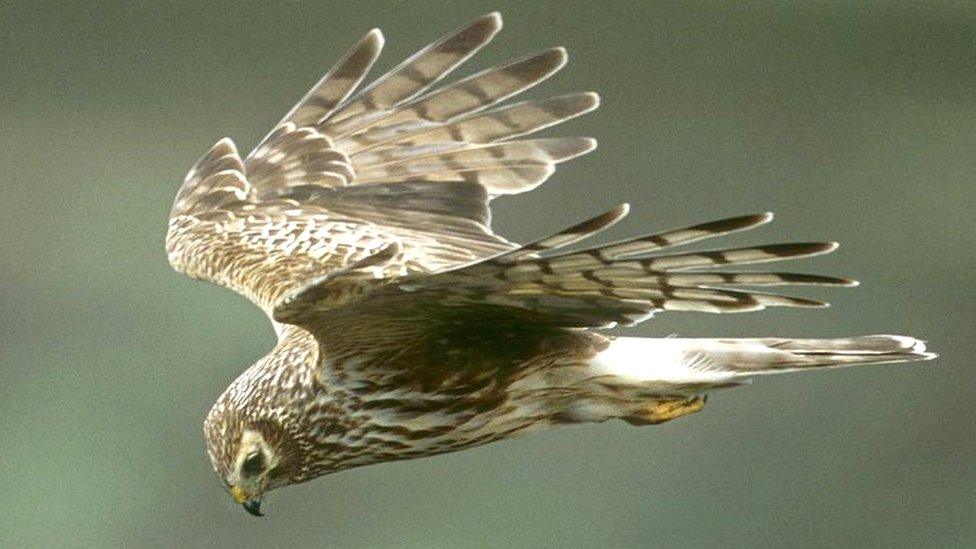Hen harrier chicks given protective satellite tags
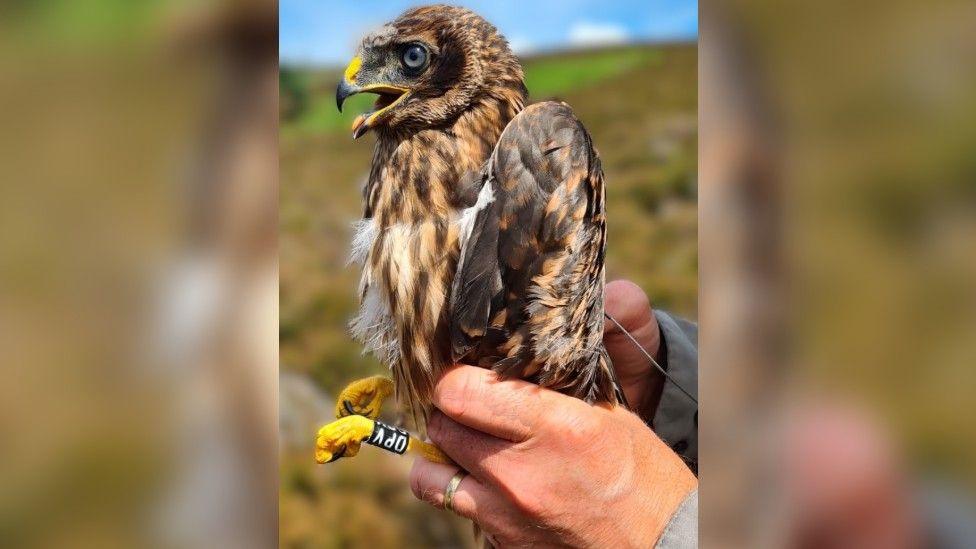
Two hen harrier chicks have been fitted with satellite tags in a bid to protect them from persecution
- Published
Two hen harriers born in the Peak District have been fitted with satellite tags in a bid to protect them from persecution.
The National Trust said the tags would provide "vital information" about the birds' behaviour and show insights into roosting, breeding, foraging sites and help gather evidence in "the fight against criminal activity" against the bird of prey.
It comes after a record numbers of the species, one of the rarest in the UK, have been killed or have gone missing in suspicious circumstances over the past five years.
Mark Thomas, head of investigations at the Royal Society for the Protection of Birds (RSPB), described satellite tagging as a "game changer" for conservation.
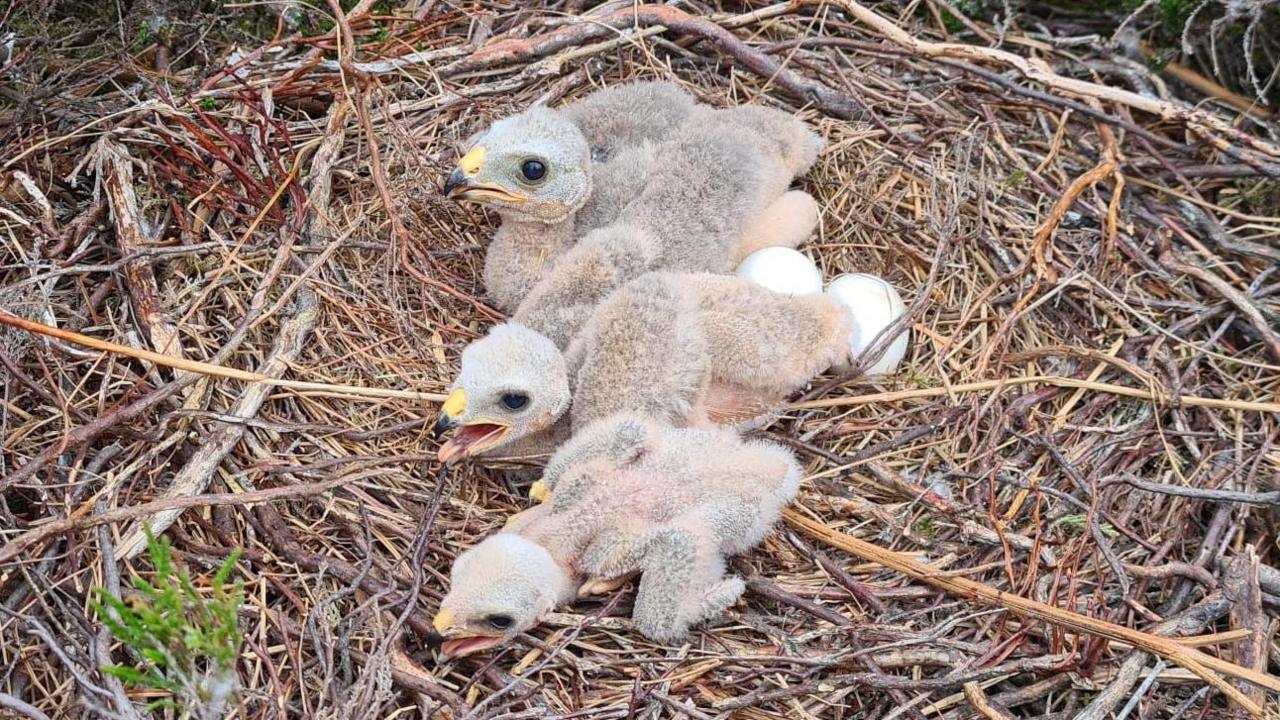
A nest of hen harriers successfully fledged a nest in the Peak District
The tagged chicks are part of a brood of three from the same nest who have successfully fledged.
They are the offspring of the adult birds which featured on the BBC's Springwatch earlier this year.
Craig Best, general manager in the Peak District at the National Trust, said it had been "wonderful" to see successful nests on the land it cared for.
"We've been restoring peatland and improving wetlands and grasslands to support a diverse mix of species," said Mr Best.
"Seeing these birds thrive is a good indicator that our work is making a difference."
Mr Best did warn that despite legal protections, hen harriers continued to face threats from illegal persecution.
"We're working closely with the police, statutory agencies, and conservation groups to tackle this issue," he said.
"Tagging is one way we can monitor the birds and gather evidence to support investigations."
Each year in England, about 30 chicks are fitted with these tags, according to the trust, which added that there are only 30 to 40 breeding pairs of hen harriers in the country.
Another tagged hen harrier - fitted with a satellite device in 2022 - has been tracked flying more than 550 miles (885km) between Cornwall and the Peak District, returning to the moorland where it fledged after stopping in Wales.
"Satellite tagging of hen harriers has been a game changer," Mr Thomas of the RSPB added. "It tells us what habitats the birds are using and informs us of the place and reason for any mortality.
"For a persecuted species this is vital, to inform police investigations, to document associated land uses and to lobby for policy outcomes that aim to provide a better future."
RSPB officers fitted the tags about a month ago, thanks to funding from the National Trust and the Peak District National Park Authority.
Get in touch
Tell us which stories we should cover in Derby
Follow BBC Derby on Facebook, external, on X, external, or on Instagram, external. Send your story ideas to eastmidsnews@bbc.co.uk, external or via WhatsApp, external on 0808 100 2210.
Related topics
- Published26 June
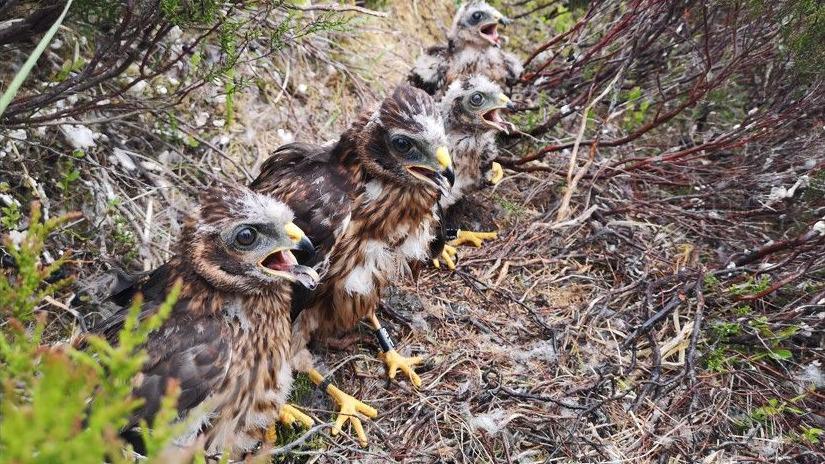
- Published21 May
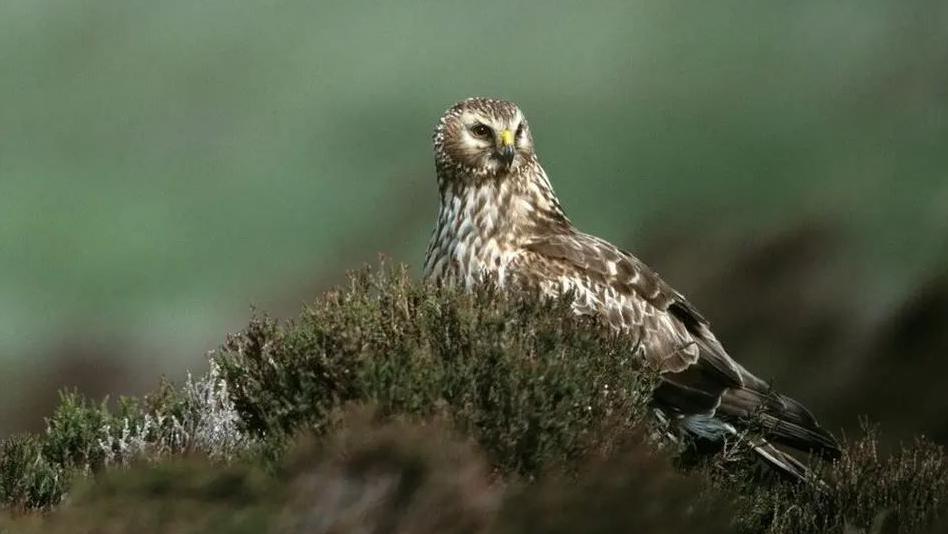
- Published25 November 2023
